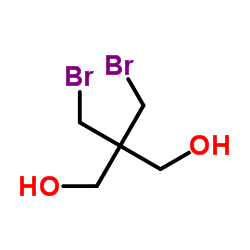Glucose-6-phosphate dehydrogenase

Glucose-6-phosphate dehydrogenase structure
|
Common Name | Glucose-6-phosphate dehydrogenase | ||
|---|---|---|---|---|
| CAS Number | 9001-40-5 | Molecular Weight | 261.940 | |
| Density | 2.0±0.1 g/cm3 | Boiling Point | 370.9±42.0 °C at 760 mmHg | |
| Molecular Formula | C5H10Br2O2 | Melting Point | N/A | |
| MSDS | USA | Flash Point | 178.1±27.9 °C | |
Use of Glucose-6-phosphate dehydrogenaseGlucose-6-phosphate dehydrogenase is the rate-limiting enzyme of the pentose phosphate pathway. Glucose-6-phosphate dehydrogenase is a major source of NADPH that is required by many essential cellular systems including the antioxidant pathways, nitric oxide synthase, NADPH oxidase, cytochrome p450 system, and others. Glucose-6-phosphate dehydrogenase can be used for the research of diabetes, aldosterone-induced endothelial dysfunction, and cancer[1]. |
| Name | Dehydrogenase glucose 6-phosphate |
|---|---|
| Synonym | More Synonyms |
| Description | Glucose-6-phosphate dehydrogenase is the rate-limiting enzyme of the pentose phosphate pathway. Glucose-6-phosphate dehydrogenase is a major source of NADPH that is required by many essential cellular systems including the antioxidant pathways, nitric oxide synthase, NADPH oxidase, cytochrome p450 system, and others. Glucose-6-phosphate dehydrogenase can be used for the research of diabetes, aldosterone-induced endothelial dysfunction, and cancer[1]. |
|---|---|
| Related Catalog |
| Density | 2.0±0.1 g/cm3 |
|---|---|
| Boiling Point | 370.9±42.0 °C at 760 mmHg |
| Molecular Formula | C5H10Br2O2 |
| Molecular Weight | 261.940 |
| Flash Point | 178.1±27.9 °C |
| Exact Mass | 259.904755 |
| LogP | 0.38 |
| Appearance of Characters | suspension | white |
| Vapour Pressure | 0.0±1.9 mmHg at 25°C |
| Index of Refraction | 1.574 |
| Storage condition | 2-8°C |
| Water Solubility | Soluble in water and dilute buffer. |
| Personal Protective Equipment | Eyeshields;Gloves;type N95 (US);type P1 (EN143) respirator filter |
|---|---|
| Hazard Codes | Xi |
| Risk Phrases | 36/37/38 |
| Safety Phrases | 26-36-24/25 |
| RIDADR | NONH for all modes of transport |
| WGK Germany | 3 |
|
Initial characterization of the human central proteome.
BMC Syst. Biol. 5 , 17, (2011) On the basis of large proteomics datasets measured from seven human cell lines we consider their intersection as an approximation of the human central proteome, which is the set of proteins ubiquitous... |
|
|
A quantitative atlas of mitotic phosphorylation.
Proc. Natl. Acad. Sci. U. S. A. 105(31) , 10762-7, (2008) The eukaryotic cell division cycle is characterized by a sequence of orderly and highly regulated events resulting in the duplication and separation of all cellular material into two newly formed daug... |
|
|
The status, quality, and expansion of the NIH full-length cDNA project: the Mammalian Gene Collection (MGC).
Genome Res. 14 , 2121-7, (2004) The National Institutes of Health's Mammalian Gene Collection (MGC) project was designed to generate and sequence a publicly accessible cDNA resource containing a complete open reading frame (ORF) for... |
| Zwischenferment |
| EINECS 232-602-6 |
| 2,2-Bis(bromomethyl)-1,3-propanediol |
| 6-Phosphoglucose dehydrogenase |
| 2,2-Bis(bromomethyl)propane-1,3-diol |
| D-Glucose 6-phosphate dehydrogenase |
| Dehydrogenase |
| NADP-glucose-6-phosphate dehydrogenase |
| 1,3-Propanediol, 2,2-bis(bromomethyl)- |
| MFCD00081656 |

